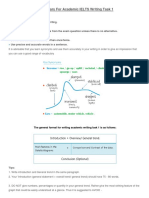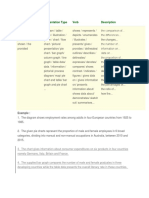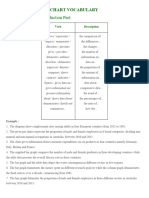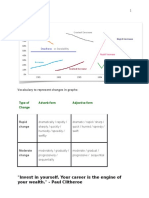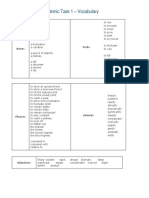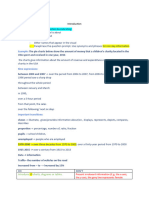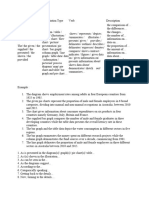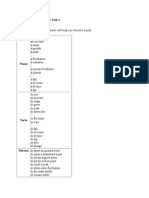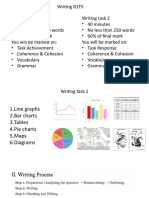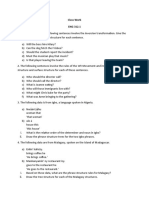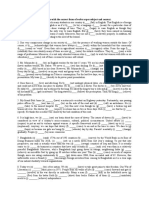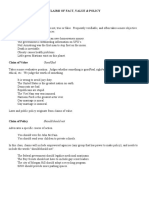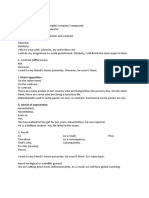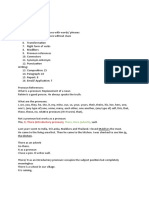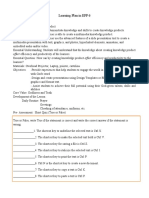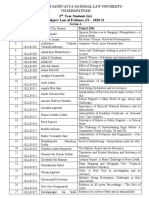0% found this document useful (0 votes)
78 views5 pagesGraph Analysis: Basic Format: Introduction + Basic/ Genertal Trends + Details Description + Conclusion
The document provides guidance on vocabulary for summarizing graphs and charts. It includes terms to use for the introduction, describing general trends, details and changes over time. For the introduction, it recommends terms like diagram, table, figure and presentation. To describe trends generally, it suggests words like in general, as is observed and generally speaking. The document also gives examples of how to indicate increases, decreases, fluctuations and gradual versus rapid changes using verbs, nouns and adjectives.
Uploaded by
Mehedi HasanCopyright
© © All Rights Reserved
We take content rights seriously. If you suspect this is your content, claim it here.
Available Formats
Download as DOCX, PDF, TXT or read online on Scribd
0% found this document useful (0 votes)
78 views5 pagesGraph Analysis: Basic Format: Introduction + Basic/ Genertal Trends + Details Description + Conclusion
The document provides guidance on vocabulary for summarizing graphs and charts. It includes terms to use for the introduction, describing general trends, details and changes over time. For the introduction, it recommends terms like diagram, table, figure and presentation. To describe trends generally, it suggests words like in general, as is observed and generally speaking. The document also gives examples of how to indicate increases, decreases, fluctuations and gradual versus rapid changes using verbs, nouns and adjectives.
Uploaded by
Mehedi HasanCopyright
© © All Rights Reserved
We take content rights seriously. If you suspect this is your content, claim it here.
Available Formats
Download as DOCX, PDF, TXT or read online on Scribd
/ 5









